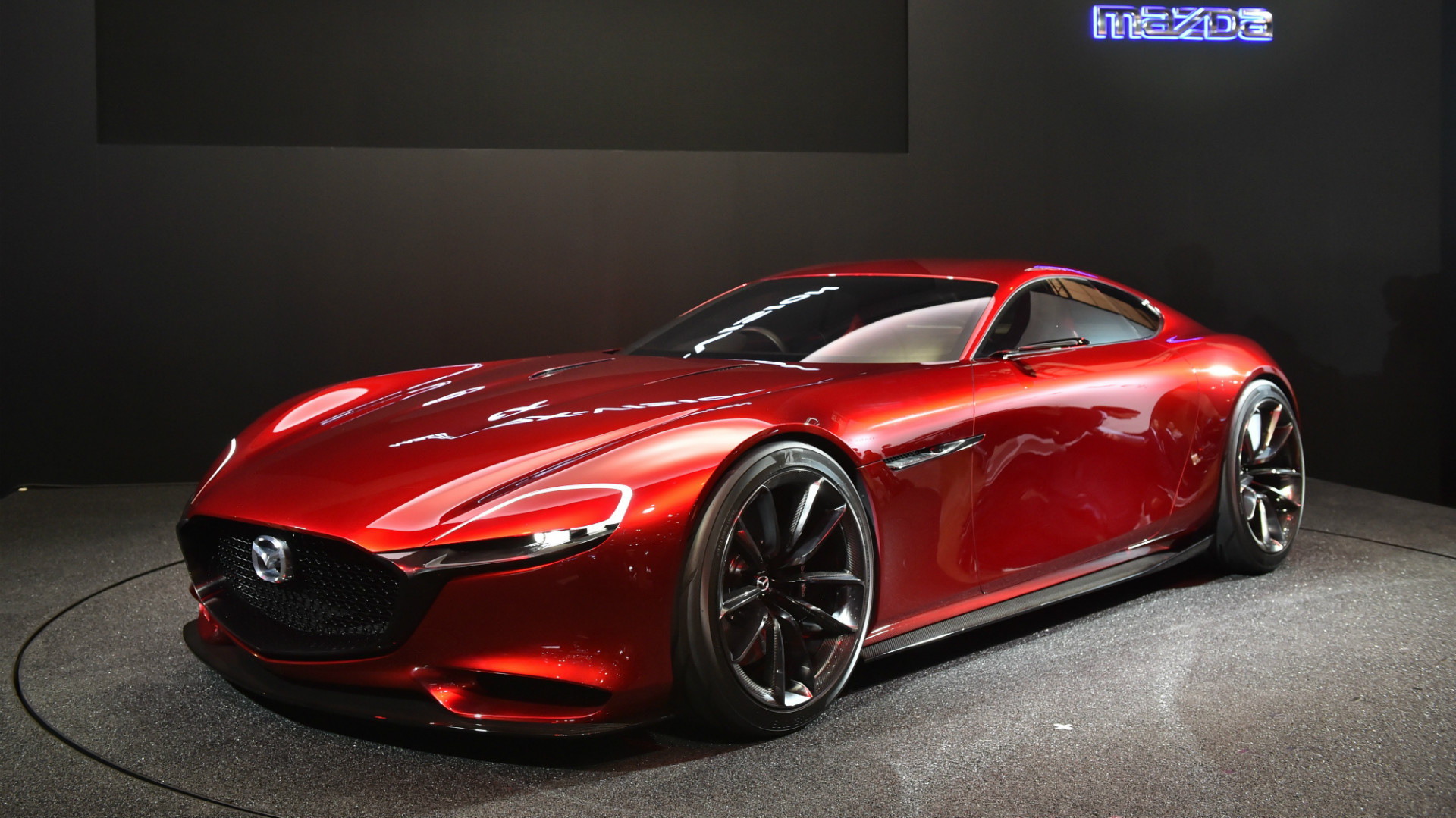

A Mazda executive has revealed in an interview that the Japanese automaker is playing with an emissions-compliant hybrid that makes novel use of the Wankel rotary engine.
Used in Mazda’s historic RX-series lineup of sports cars, the Wankel rotary engine is a radical internal combustion engine whose operation more closely resembles that of a two-stroke engine than a traditional four-stroke engine. These give it the advantages of great power density and smooth output, though these come at the cost of questionable reliability, high greenhouse gas emissions, and poor fuel economy.
Mazda has reconsidered the rotary engine’s value in modern vehicles and, in conjunction with Toyota, has developed the rotary as a small auxiliary power generator, or range extender, for electric vehicles. It has determined that one possible implementation for this range extender is as part of an ultra-compact hybrid drivetrain, one in which the rotary can still power the wheels, but regularly serves as a way to generate electrical energy. This “XEV” drivetrain, as Mazda calls it, was admitted by Executive Officer for Powertrain Development Ichiro Hirose to be something the automaker is “considering” using.
“We made an announcement that we are considering the combination of the rotary-based range extender and combined that with battery EV,” Hirose told Australia’s Drive (unaffiliated). “What that entails is not simply a combined solution you’d find normally but it falls under what we call an umbrella term ‘XEV,’ and what that means is that of course the range extender and the rotary engine has two functions. It has the generator function and also it can be used to provide the drive force to give you traction.”
Hirose explained that this XEV drivetrain could allow any vehicle using it to operate either like a battery EV with a small onboard charger, or like a plug-in hybrid, which tend to make heavy use of small electric motors but lean mainly on their combustion engines.
“What we intend to do is that with this combination you can vary the amount of battery and also the amount of fuel tank supply,” Hirose continued. “What that allows us to do is, depending on the ratio between the two, is that we can have a derivative that can work more like a plugin hybrid.”
“If you reduce the other way around it could be a pure battery-electric, using really the rotary engine as a range extender and, according to the balance, you can even provide something akin to the series hybrid that is providing the drive force. So, we are looking at a wider coverage and scope. Based on this architecture it allows us to do that, to explore the huge range of applications we can have with the rotary.”
He touted the “XEV” drivetrain’s flexibility, allowing it to make the rotary engine emissions-compliant worldwide, even in ecologically-minded regions such as California.
“If we were to introduce it in the U.S. we would comply with the [stringent] level regulations during when the rotary is in operation. So, we have been able to make progress,” Hirose concluded. “I’m just saying that—theoretically—if we were to introduce it in the U.S. we would be able to comply with the strictest of regulations.”
Despite calls from rotary engine fans to revive the rotary engine for use in a sports car, Mazda looks set to repurpose the powerplant as a range extender for its first electrified vehicle—one that definitely won’t be a sports car. When questioned in December about the return of the RX-series sports car, company executives were more cautious than ever, so it may be foolish to get your hopes up for a Mazda RX-9.